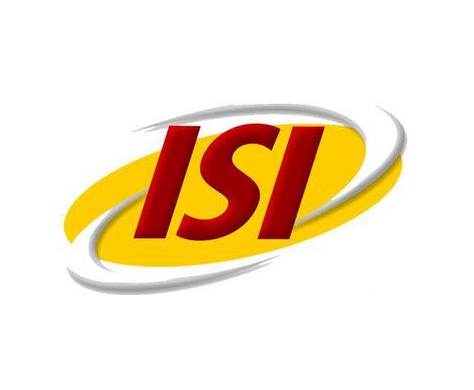دانلود رایگان مقاله لاتین راهبرد رقابتی برای هر مرحله از سیکل عمر نهایی اینترمدال از سایت الزویر
عنوان فارسی مقاله:
شناسایی استراتژی های رقابتی برای هر مرحله از چرخه عمر پایانی اینترمدال
عنوان انگلیسی مقاله:
Identifying competitive strategies for each phase of the intermodal terminal life cycle
سال انتشار : 2017

برای دانلود رایگان مقاله راهبرد رقابتی برای هر مرحله از سیکل عمر نهایی اینترمدال اینجا کلیک نمایید.
بخشی از مقاله انگلیسی:
2. Competition, resources and strategy in the intermodal terminal market
In order to guide terminal strategy, it is first necessary to understand the terminal's role in the market. Wiegmans, Masurel, and Nijkamp (1999) used Porter's model of five competitive forces to consider the intermodal freight terminal market. They discussed barriers to entry and threats of substitute goods and which actors exercise power in the market. The industry competitors are other terminals operating within the local area, while potential entrants are new terminals that could be developed or perhaps old terminals re-entering the market. This is not normally a very immediate threat due to high entry barriers such as high investment costs, lack of market potential and lack of suitable locations; therefore, the threat of substitutes (i.e. road haulage) is far more serious and this is where the usual difficulty for intermodal transport lies. In terms of negotiating power, there is the negotiating power of suppliers, in this case the owner of the terminal facilities, if different from the operator. This is not always an issue as in many cases the operator is the owner or if not then they have a fairly stable relationship or concession with the owner, and both their interests are in alignment. The negotiating power of buyers is more often a challenge, usually rail operators bringing their trains to the terminals or 3PLs managing trains. There is also a second level of buyer power because the ultimate buyer of the transport service is the shipper, who will use road haulage if rail costs are too high or service quality too low, but these concerns are mediated through the rail operator or 3PL through whom the shipper contracts their transport services. If the terminal costs are too high or the service quality too low then the rail operator cannot ultimately provide attractive rail services to the shipper. The appropriate strategy to adopt can also be derived through reference to the resource-based view (RBV), which seeks ways to exploit asset specificity, whereby resources should be non-substitutable. Intermodal terminals are a fairly interchangeable resource unless they can offer better service or, ideally, more innovative and unique services. Thus Monios and Bergqvist (2016b) showed how moving from the resource-based view to the relational view can produce resource heterogeneity from an inter-firm relationship, for example a terminal integrating or collaborating with a rail operator and a shipper. Ng and Gujar (2009) applied Porter's Competitive Diamond model to terminals, which is an updated version of the Five Forces. They argue that this model is more dynamic, moving beyond improving terminal operations by investment in factor conditions towards innovative strategies through which a terminal can differentiate itself from its competitors and even overcome deficits in factor conditions such as location or capital. As transport decisions and requirements become more integrated with the larger logistics strategy of terminal users, better customer focus and integrated solutions with rail operators can help terminals embed themselves more stably within a customer's supply chain. Cooperation with competitors and intensive marketing can also be applied, therefore using this lens reveals the importance of intermodal terminals taking a proactive stance on marketing strategy, rather than simply focusing on terminal efficiency and competing through price against broadly substitutable competitors. This kind of innovative strategy is captured by the value net model (Brandenburger & Nalebuff, 1996), which includes not just competitors, suppliers and customers but also complementors, which in this case would refer to an innovative strategy such as a terminal setting up a service in conjunction with a rail operator (e.g. sharing terminal equipment upgrading costs in exchange for traffic guarantees, providing maintenance and storage of wagons and locomotives) and working closely with a shipper (e.g. flexible opening hours of the terminal, flexible storage fees, detailed planning/ preparation of chassis for pre- and post-haulage). Sandberg (2013) showed that business models in logistics have internal and external components, and Monios (2015a) identified the internal and external governance relationships between intermodal terminals and logistic platforms, whereby the importance of external relationships with rail operators and ports were revealed to be of crucial importance in obtaining competitive advantage. These theoretical developments indicate that earlier models such as Porter and the RBV provide a sound basis but require increased nuance in their application to specific sectors. In order to be more specific about the kinds of strategies available to a terminal operator, it is necessary to understand that the terminal's needs and options change during its life cycle. This paper builds on the use of the product life cycle concept by Monios and Bergqvist (2016a) who identified the four phases of the intermodal terminal life cycle, by using the marketing literature to identify the kinds of strategies relevant at each phase.
برای دانلود رایگان مقاله راهبرد رقابتی برای هر مرحله از سیکل عمر نهایی اینترمدال اینجا کلیک نمایید.
کلمات کلیدی:
Recent Research in Transportation Business & Management Articles ... https://www.journals.elsevier.com/research-in-transportation-business.../recent-articles Cargo cycles in commercial transport: Potentials, constraints, and ... Identifying competitive strategies for each phase of the intermodal terminal life cycle. [PDF]Incorporating Inland Port Strategies Into TxDOT Planning : Toolbox (5 ... ctr.utexas.edu/wp-content/uploads/pubs/5_4083_01_P1_P2.pdf Sep 28, 2006 - Again the lifecycle concept is described in 4083-1 and the 4083 Guide. ... reports describe the actions of both sponsors and TxDOT staff at each stage. ..... BNSF is currently expanding and 'up-grading' its intermodal facility in ... Inland Ports / Dry Ports - Hofstra People - Hofstra University https://people.hofstra.edu/geotrans/eng/ch4en/appl4en/ch4a4en.html Thus, after a phase that relied on the development of port terminals and maritime ... An intermodal terminal, either rail or barge that has been built or expanded. .... strategies related to each stage in the life cycle of an inland terminal from its ... Intermodal Transportation and Containerization - Hofstra People https://people.hofstra.edu/geotrans/eng/ch3en/conc3en/ch3c6en.html The Nature of Intermodalism History as well as competition between modes has ... Each mode, particularly the carriers that operated them, has sought to exploit its ... transport systems through intermodalism, which took place in several stages, first ..... Terminal, Port Newark (New York) Container Usage during its Life-Span ...
